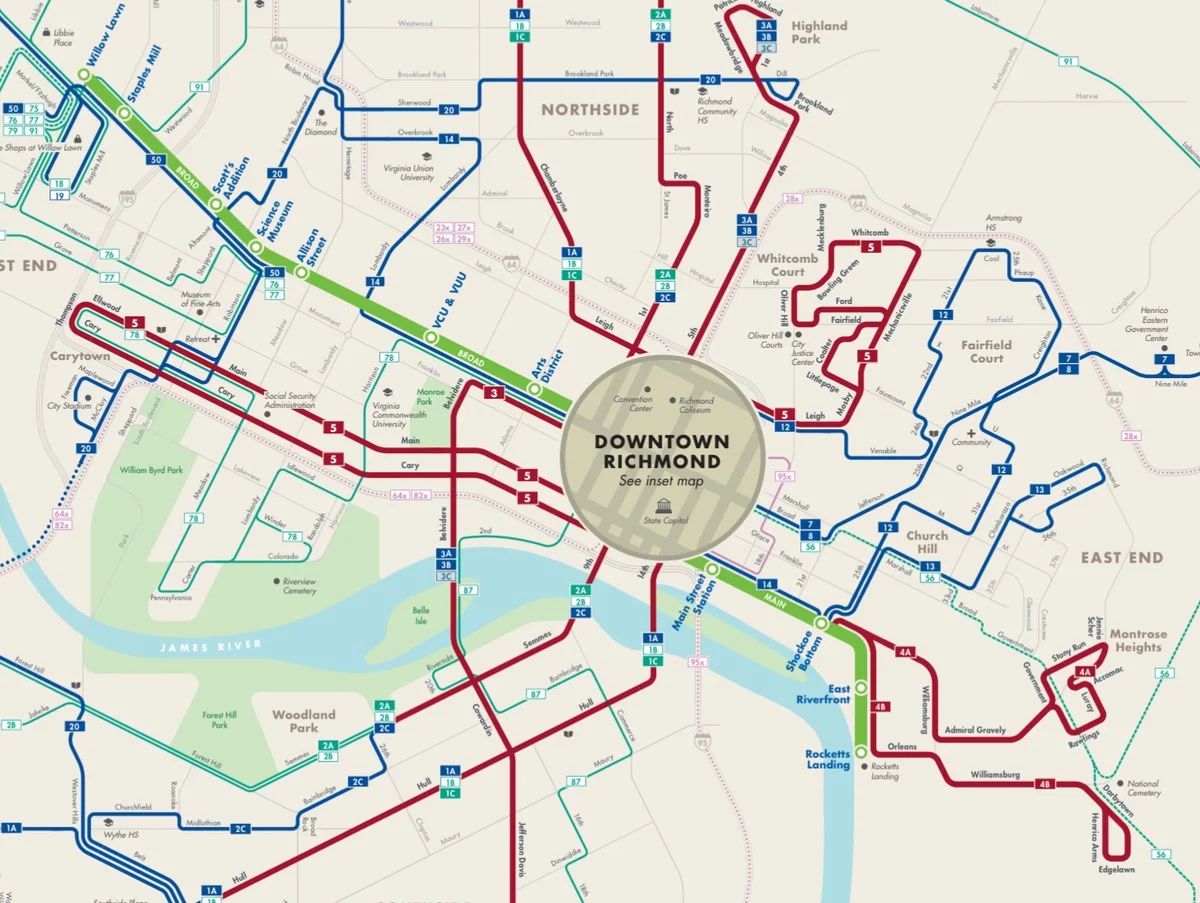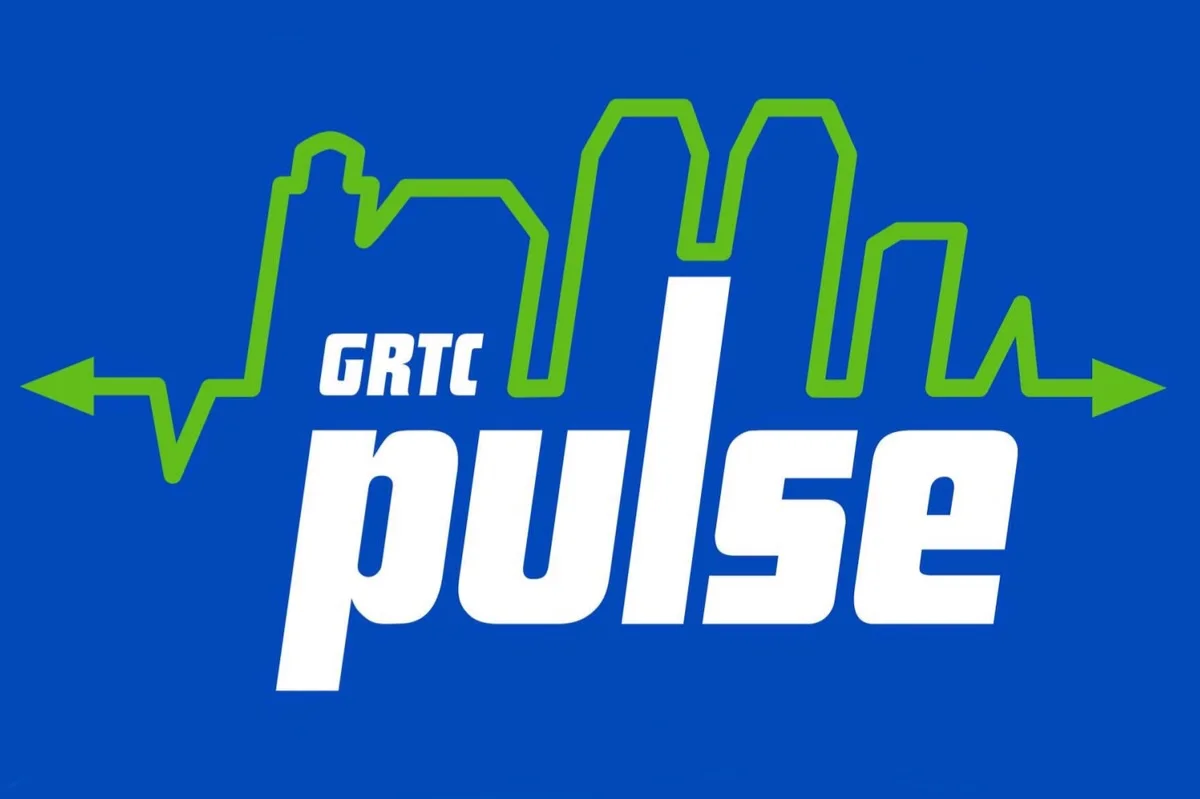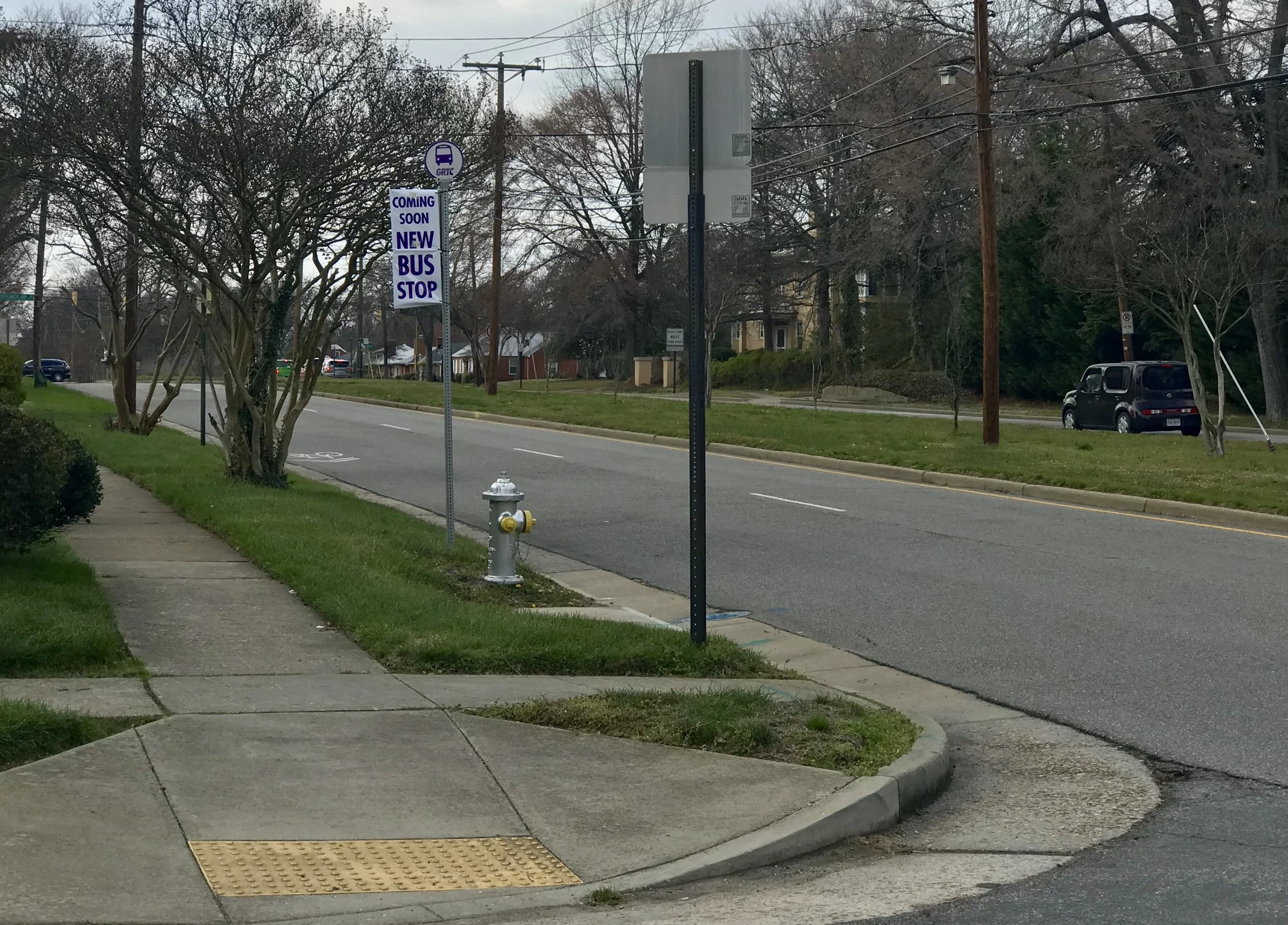A new map for a new system!
Pulse sponsorship gets a jump start
This week in transit: Getting ready to ride
Support for Henrico Public Transit
Henrico Board of Supervisors, Public Comment Period (March 13, 2018)
The following are comments in support of the expansion of public transit in Henrico made during the public comment period at the Henrico Board of Supervisors meeting on March 13, 2018.
Nelson Reveley, reveley@grace-covenant.org, Tuckahoe District
Grace and Peace, Mr. Chairman, Board of Supervisors, Mr. Manager, and everyone here tonight.
My name is Nelson Reveley. I live the Tuckahoe District, and it is a blessing to be here with you all. I am here with friends and fellow supporters of Henrico public transportation and the benefits it brings to the County and the region. We’re here tonight to thank you and County staff and to encourage you as you continue to consider growing public transit in the County. We are here because we care immensely about the kind of flourishing communities that public transportation helps cultivate. Because frequent and far-reaching public transit lets people lead healthier, more productive, and more inter-connected lives. In my own personal case, my wife has epilepsy and is not able to drive. So we are a one car household with our two kids, but the #2 bus, which presently runs from Regency to downtown, has been a key asset for our family in reaching daycare, work, family, and return trips home. That bus makes Henrico the place we can readily and reliably call home, and we are so grateful for that.
For us and others, public transportation provides a key investment in our capacity to thrive in community with others. And the vision and possibilities that you all are considering for enhancing public transportation in Henrico is inspiring. Bringing those possibilities to reality will only make Henrico County a more prosperous, enticing, and accessible place to live, work, and play.
If one considers that vision of frequent and far-reaching public transit simply on Henrico’s main thoroughfares, for all those residents who would live within walking distance of a frequent bus network (as well as those who would move in order to be near it), expansive public transit would provide vibrant pathways to go about everyday life.
- Pathways for the growing number of seniors who want to age in place but still reach the grocery store, the doctor, still enjoy community events, concerts, museums, volunteering, visits with family and friends. Pathways as well for seniors to access an even broader pool of home health care workers, who whether by necessity or frugality might not be driving.
- Pathways for people seeking employment, or job training and further education, so that they can provide ever more fully for themselves and their families - be they refugees, returning citizens, those currently down on their luck, or young adults fresh out of school. [The majority of GRTC riders today use the bus to get to and from work]
- Pathways for young professionals who want to live or work in the County while maintaining a quality of life not totally dependent on using cars, a quality of life oriented around walkable neighborhoods, workplaces, and activity centers.
- Pathways for businesses seeking to hire those young professionals, as well as for businesses seeking to hire at entry-level positions.
- Pathways for youth to reach after school and summer opportunities, museums, parks, internships, and part-time work.
- Pathways for those seeking to lead more environmentally sustainable and physically healthy lives, given the decreased carbon footprint and increased human footsteps regular use of public transit affords.
These pathways embody and enact the Henrico Way, efficiently and effectively enhancing the quality of life for Henrico residents in a fiscally responsible manner. Incorporating public transit as part of the fabric and civic infrastructure of Henrico’s major corridors is worth every penny. And that is why all of us here on this issue tonight are so excited and grateful for your leadership, diligence, and dedication to enriching the conditions for flourishing in Henrico and our region. We will have a few more speakers sharing their perspectives on this front. Above all though, thank you, and blessings on you.
Ms. Kayla S. Jacobs, kjacobs@cwsglobal.org, Church World Service Refugee Resettlement and Immigration Program (3314 North Parham Road, Suite B, Richmond, VA 23294)
My name is Kayla Jacobs and I’m the Refugee Organizer from Church World Service Refugee Resettlement. I am here to speak on behalf of the hundreds of refugees we resettle every year, most of whom live here in Henrico County (at least 90%). Imagine having to flee your country with almost nothing but the clothes on your back. Often times when we pick up new arrivals from the airport they don’t have luggage. All they have is a small, plastic, UNHCR (United Nations High Commissioner for Refugees) bag. Additionally, refugees receive a modest stipend of $925 to get them settled in the US, most of that stipend goes to their rent.
As you can imagine, finding work right away is one of the main priorities. However, finding the means to get to work is much more of a challenge. Buying a car is out of the question for most newly arrived refugees because, on the cheap end, buying a used car plus repair, maintenance, insurance, and gas is easily several thousand dollars.
As an agency we do our best to help our clients within the means of our capacity to do so. Fortunately we have an excellent Employment Specialist who works hard to find decent jobs for our clients and makes sure they have a way to get to those jobs. With lack of transportation, however, many jobs are not available to our clients, especially jobs in Short Pump and near the airport. Due to the nature of the jobs that many refugees get when they first move to the US, such as factory jobs, hotels, hospitals, and restaurants, reliable transportation on the weekends and evenings is a must.
Employment is just one of many reasons expanding public transit is beneficial to our large refugee community in Henrico. Our clients also have to get to ESL classes, many are enrolled in college courses, doctors appointments, grocery shopping, etc. Many refugees have told me stories about walking with their spouse and young kids, many miles, with heavy grocery bags.
For all of these reasons we fully support Henrico county extending the bus system. It would be truly beneficial to our agency, and many other social services, and to our large refugee community. The quicker we can get people on their feet when they first move to the US the more beneficial it is for the whole community. Reliable transportation is a significant step we can take to assist the refugee population.
Thank you for giving me time to speak on behalf of Church World Service and for your consideration. Please feel free to reach out to our organization if you have any questions. My contact information is on my talking points, which you have a copy of. Thank you.
James Irwin, Brookland District
Thank you all for your public service. My name is James Irwin. I live in Henrico in the Brookland District. My wife and I recently purchased our first home here. We moved from Richmond city.
I take the bus to my job at VCU every day — Route 19 on Broad Street. Over the past two years, I've taken several GRTC routes consistently — No. 1, No. 2, No. 6 and No. 16. I take about 500 bus rides a year. I love being able to take the bus, and not feel like I need a car to get around town.
I have been really encouraged to hear about future expansion of GRTC service — to the airport, to Short Pump — and am really looking forward to the Pulse. As someone who lives off Broad Street and takes routes 6 and 19 often, I am very excited about the VDOT pedestrian project from Willow Lawn to Forest Ave. It's desperately needed. I currently have to race across six lanes of traffic every morning to catch the bus and I'm really looking forward to no longer doing that.
I urge you all to continue exploring options to enhance and expand bus service in Henrico. Short Pump and the airport are an excellent start. Mass transit can do so much for this region — provide people with access to jobs, alleviate traffic, increase transportation capacity for tourism, allow for zoning that better utilizes land and increases property values. My wife and I moved to the Richmond area for many reasons, and one was because we think it has a bright future, and better mass transit can be a big part of that.
Again, thank you for your service, and for the opportunity to speak here tonight.
Virginia Cowles, League of Women Voters of the Richmond Metropolitan Area
Thank you, Chairman Thornton and other members of the Henrico Board of Supervisors for this opportunity to speak about extending regular fixed-route GRTC service from Willow Lawn to Short Pump.
My name is Virginia Cowles and I live about a mile east of Willow Lawn. Of course I would like to be able to take a bus to Short Pump because the traffic patterns where the I-64 off-ramp merges with Broad Street Road are daunting, but I am here this evening to speak as Chair of the Transportation Committee of the League of Women Voters of the Richmond Metropolitan Area.
About 30 years ago our local League concluded after a study that the Richmond region should have improved public transportation. We would like to see greater extension of bus service into Henrico County, particularly to Short Pump, and hope that this service has been budgeted for the coming fiscal year.
As you know, the VTrans “2040 Multimodal Transportation Plan: Corridors of Statewide Significance Needs Assessment, East-West Corridor” states, “. . . there are significant passenger delays on US 250 beginning near Short Pump and continuing into the City of Richmond . . . .”(page 56) Also, “The largest concentration of severe crashes along Segment C4 occurred on US 250 (West Broad Street) northwest of Richmond in Henrico County. Over a distance of approximately eight miles, between Gayton Road and Dickens Road 344 crashes took place [between 2010 and 2012]” (ibid. page 55).
According to VTrans’ “VMTP 2025 Needs Assessment” for the Richmond Region, “Transit access is limited west of Willow Lawn. Extending and improving transit access along the entire [US 250 and I-64] corridor would improve transit accessibility for the region substantially.” (page 34) A map (ibid. page 23) shows that during evening peak hours, traffic is congested from five to twenty-five percent of the time between Innsbrook and Short Pump.
Budgeting for transit from Willow Lawn to Short Pump will mitigate traffic congestion. It will bring shoppers to shops safely and workers to jobs.
Thank you again for giving me a hearing.



